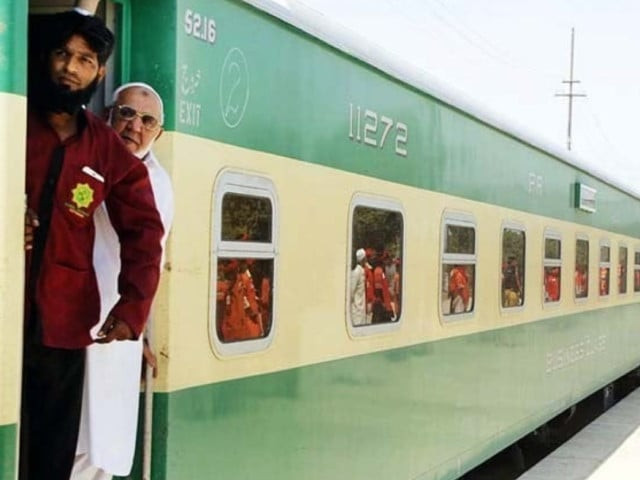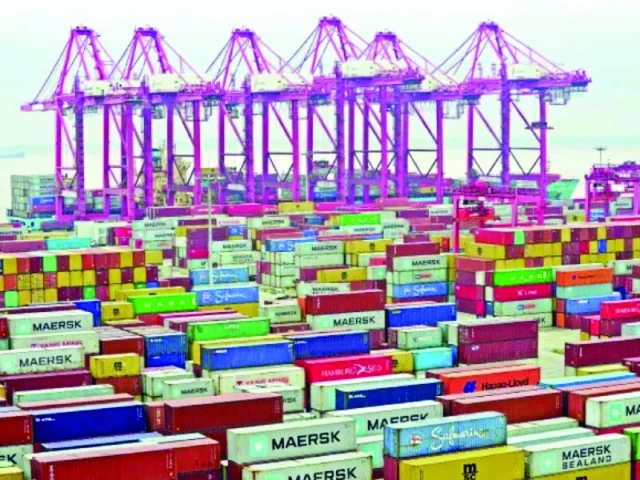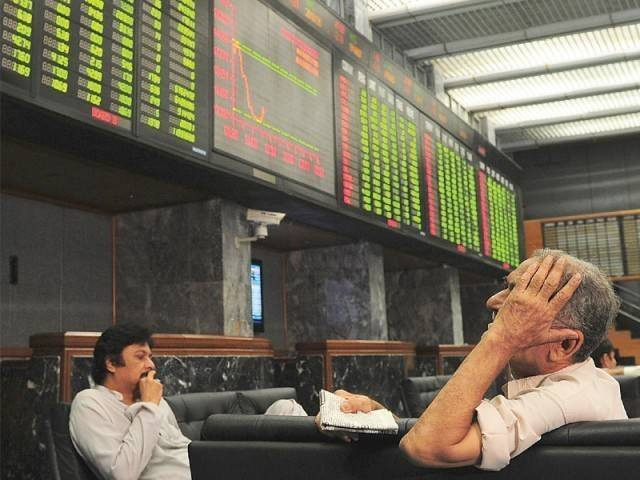Business
ADB investment puts Pakistan Railways back on track | The Express Tribune

KARACHI:
Pakistan’s railway sector, long described as the backbone of national connectivity, is again moving to the forefront of policy debates as the government turns to the Asian Development Bank (ADB) for support.
Years of underinvestment, safety lapses, and the stalling of promised Chinese funds have left Pakistan Railways in a precarious state, forcing policymakers to look elsewhere. Officials confirm that Islamabad is seeking a $2 billion package from the ADB to begin long-awaited modernisation works, most notably on the Karachi-to-Peshawar Main Line-1 (ML-1) route.
The development comes at a time when fiscal pressures, declining freight revenues, and growing competition from road transport have left the railways struggling to perform their role as a cost-effective logistics provider.
Once considered a symbol of national pride, Pakistan Railways now carries around 70 million passengers annually but operates on outdated tracks and antiquated signaling systems. The freight side of operations, which used to generate the bulk of revenue in the 1960s, has collapsed to less than a tenth of overall business, pushing industry and traders onto highways.
This shift has come at a steep cost: logistics expenses in Pakistan are estimated to be about 35% higher than the South Asian regional average, eroding export competitiveness and putting pressure on sectors such as textiles and agriculture. The decaying system has also reduced safety, with derailments and breakdowns becoming more common, further weakening public trust in rail travel.
The ML-1 project has been on the table for years under the China-Pakistan Economic Corridor (CPEC), initially tagged at $6.8 billion but now estimated to exceed $9 billion due to repeated delays and cost escalations. China had long been expected to bankroll the project as part of its Belt and Road Initiative, but its disbursements have slowed dramatically amid Pakistan’s worsening fiscal situation and Beijing’s own economic recalibrations.
The ADB’s decision to intervene, therefore, represents more than just a financial transaction. It reflects Islamabad’s growing reliance on multilateral lenders at a time when bilateral commitments have become uncertain. Analysts suggest the shift also diversifies Pakistan’s options and reduces overdependence on a single source of funding.
The proposed ADB package would target three areas: rehabilitation of ML-1 to allow faster and safer travel, development of a dedicated freight corridor to take pressure off highways, and the introduction of digital systems to monitor and secure railway operations. If executed properly, these changes could enable passenger trains to run at up to 160 kilometres per hour, cut travel time on key routes nearly by half, and encourage a revival of rail-based logistics.
Exporters, especially in the textile sector that accounts for nearly 60% of Pakistan’s exports, see in this a chance to reduce delays and cut costs associated with moving goods to Karachi Port. Improved connectivity between port cities and inland hubs such as Faisalabad and Multan could also enhance Pakistan’s role as a trade corridor linking South Asia with Central Asia.
Economists argue that the benefits go far beyond efficiency. Infrastructure investment of this scale has a multiplier effect, which generates tens of thousands of construction jobs and stimulates industries such as steel, cement, and services. A stronger railway backbone would also reduce the environmental toll of excessive trucking, lowering fuel consumption and emissions.
In a country where energy imports weigh heavily on the balance of payments, the savings could be significant. For passengers, meanwhile, modernised trains and safer systems would restore confidence in a service many have abandoned in favour of buses or private transport.
Pakistan’s external debt now exceeds $130 billion, much of it owed to multilateral lenders, and the repayment capacity remains a concern. While ADB loans are typically concessional, offering softer terms than commercial borrowing, they still require discipline in implementation.
Critics note that past railway projects have often been marred by inefficiency, corruption, and bureaucratic inertia. Without proper oversight and reform, there is a risk that even low-cost financing could add to the country’s debt burden without delivering transformative results. Transparency advocates are calling for the independent monitoring of funds to ensure they are not wasted.
China’s sidelined role also adds a geopolitical dimension. Over the past decade, Beijing has invested more than $25 billion in Pakistan, largely in energy and infrastructure, but its pace of financing has slowed markedly. Analysts attribute this partly to Pakistan’s fragile fiscal position, which increases repayment risks, and partly to China’s shifting global priorities as its own economy faces headwinds.
Some experts argue that China has not abandoned CPEC altogether but is recalibrating its involvement, focusing on selective projects while encouraging Pakistan to diversify its financing sources. In this context, the ADB’s re-emergence as a key financier could be seen less as a replacement and more as a complement to future Chinese investments.
There are lessons to draw. Bangladesh and India have both secured ADB support for rail and metro upgrades, with visible success in enhancing efficiency and safety. Pakistan has lagged behind, partly because of political instability and partly due to a centralised management structure that has resisted reform.
The ADB’s involvement might serve as leverage for Islamabad to introduce governance changes, open space for private sector participation, and embrace technology-driven solutions. Without such reforms, financial injections alone may not lead to the desired turnaround.
The writer is a member of PEC and holds a Master’s in Engineering
Business
US economy grows at fastest pace in two years

The US economy picked up speed over the three months to September, as consumer spending jumped and exports increased.
The world’s largest economy expanded at an annual rate of 4.3%, up from 3.8% in the previous quarter. That was better than expected, and marked the strongest growth in two years.
The figures offer a clearer picture of the state of the US economy heading into the end of the year, after data collection had been delayed by the US government shutdown.
The report showed consumer spending rising by 3.5%, compared with 2.5% in the previous quarter.
Business
Fish and chip shop offers 100 free Christmas meals in Southampton

“It’s just a way of us giving back to the community,” says a fish and chip shop owner, who is giving away 100 free meals on Christmas Eve.
Raj Khaira, from Southampton, has owned Top Catch fish and chips in Shirley for five years and says he wants to support lonely people in the area.
He says he feels lucky to have a big family but knows for some customers a conversation with a shopkeeper might be the only one they have some days.
He says the shop will give portions of sausage and chips to those in need as a way of “giving back to the people who haven’t got family around them and sometimes can’t afford a hot meal”.
Mr Khaira speaks about working in business all of his life and how much he enjoys meeting “different people every day, from different backgrounds”.
“I’ve done it since I was a young kid so it’s all I really know,” he says.
He adds that many of his customers are elderly and do not have connections over the festive period.
“Christmas for majority of us is probably going to be a joyful and busy day but for some people it’s probably going to be a quiet day,” he says.
After posting about the plans to donate on social media he received a lot of publicity and Mr Khaira is prepared to “probably do more than” 100 meals.
He says the shop has already organised a toy and present drop off to Southampton hospitals this December, with many of the donations coming from customers.
He says: “We’re only where we are as a busy shop because of our community and our lovely customers that come in and sometimes you’ve got to give back and I’m happy to do that.”
Looking back on some of the negative news reported in Shirley earlier this year with the rise in anti-social behaviour in the area, he admits he had suffered.
His shop window was smashed in the summer, but he says: “Christmas time lets us just try and forget that for a minute and just try and have a good time, and reflect back on the year and hopefully next year is going to be a better one.”
Business
Gold price shines by Rs8,500 per tola – SUCH TV

The price of per tola 24-karat gold in Pakistan increased by Rs8,500 on Tuesday, reaching Rs470,862 compared to Rs462,362 on the previous day.
According to the All Pakistan Sarafa Gems and Jewellers Association, the price of 10 grams of 24-karat gold rose by Rs7,288, climbing to Rs403,688 from Rs396,400 on last day.
Likewise, the rate of 10 grams of 22-karat gold went up by Rs6,681, closing at Rs370,060 against Rs363,379.
In the international market, gold prices increased by $85, reaching $4,485 compared to $4,400 on the previous day.
Meanwhile, the price of per tola silver and that of 10-gram remained stagnant at Rs Rs7,205 and Rs6,177, respectively. International silver prices also remained unchanged at $69.30.
-

 Business1 week ago
Business1 week agoStudying Abroad Is Costly, But Not Impossible: Experts On Smarter Financial Planning
-

 Fashion5 days ago
Fashion5 days agoIndonesia’s thrift surge fuels waste and textile industry woes
-

 Business1 week ago
Business1 week agoKSE-100 index gains 876 points amid cut in policy rate | The Express Tribune
-

 Sports1 week ago
Sports1 week agoJets defensive lineman rips NFL officials after ejection vs Jaguars
-

 Business5 days ago
Business5 days agoBP names new boss as current CEO leaves after less than two years
-

 Tech5 days ago
Tech5 days agoT-Mobile Business Internet and Phone Deals
-

 Entertainment1 week ago
Entertainment1 week agoPrince Harry, Meghan Markle’s 2025 Christmas card: A shift in strategy
-

 Sports5 days ago
Sports5 days agoPKF summons meeting after Pakistani player represents India in kabaddi tournament











